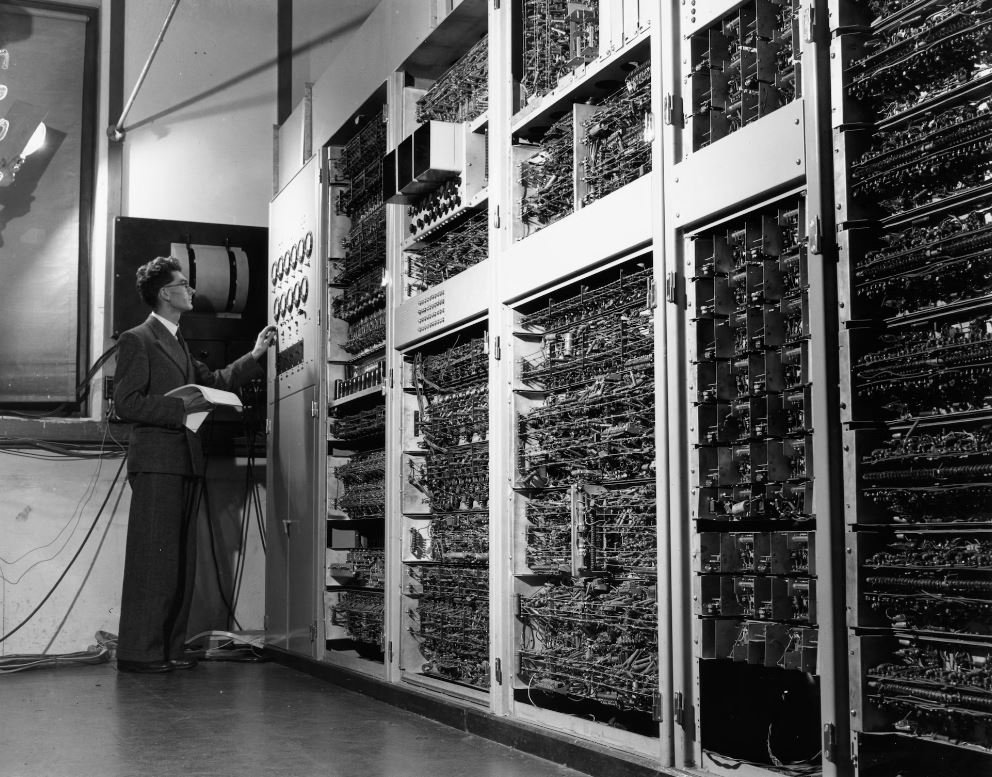Gradient Descent Graph
Gradient descent graph is a powerful tool used in various fields, including machine learning and optimization algorithms. It provides a visual representation of the optimization process and helps in understanding how the algorithm is moving towards the minimum of a cost function when training a model. This article explores the concept of gradient descent graph and its significance in different applications.
Key Takeaways:
- Gradient descent graph visualizes the optimization process.
- It helps in understanding how the algorithm moves towards the cost function’s minimum.
- Used in machine learning and optimization algorithms.
Understanding Gradient Descent Graph
Gradient descent is an iterative optimization algorithm that minimizes a cost function by adjusting the parameters of a model. The gradient descent graph illustrates the change in the cost function over each iteration. It displays the curve where the x-axis represents the number of iterations and the y-axis represents the cost function’s value. The graph starts with a higher cost and gradually converges towards the minimum cost, indicating the optimal values for the model’s parameters. This iterative process continues until a satisfactory minimum is reached.
Each point on the graph represents a specific parameter value combination and the corresponding cost.
Types of Gradient Descent
There are different variations of gradient descent based on the amount of data used for each iteration and the update algorithm. The two primary types are:
- Batch Gradient Descent: In this method, the entire training dataset is used to compute the gradient at each iteration. It provides an accurate estimate of the gradient, but it can be computationally intensive for large datasets.
- Stochastic Gradient Descent: This approach randomly selects a single instance or a small subset of instances to compute the gradient. It is faster but can have higher variance due to the stochastic nature of the selection process.
Stochastic Gradient Descent often converges faster than Batch Gradient Descent due to frequent weight updates.
Advantages and Limitations
Gradient descent graph offers several advantages and has some limitations as well. Let us explore them:
| Advantages | Limitations |
|---|---|
|
|
| Gradient descent graph helps in understanding the optimization trade-offs and choosing appropriate parameters. | |
Applications of Gradient Descent Graph
The gradient descent graph finds applications in various fields, some of which are:
- Machine learning – Training models, such as linear regression and neural networks, by minimizing the cost function.
- Optimization algorithms – Finding the minimum of a cost function in fields like engineering and finance.
- Image analysis – Enhancing image quality and reducing noise through iterative optimization.
Gradient descent graph aids in visualizing the optimization progress and fine-tuning the models accordingly.
Conclusion
Gradient descent graph is a valuable tool for visualizing and understanding the optimization process. By plotting the cost function’s values against the number of iterations, this graph provides insights into how an algorithm moves towards the minimum. Whether in machine learning or other optimization algorithms, the gradient descent graph helps researchers and practitioners make informed decisions by analyzing the trade-offs and adjusting parameters. It plays a crucial role in training accurate models and finding optimal solutions for various problems.

Common Misconceptions
1. Gradient Descent is only used in machine learning
One common misconception about gradient descent is that it is only used in machine learning algorithms. While gradient descent is widely used in machine learning, it is also a fundamental optimization algorithm that can be applied in various fields. For example:
- In physics, gradient descent is used to find the minimum energy state of a physical system.
- In computer vision, gradient descent is used for image registration and object recognition.
- In finance, gradient descent is used to optimize portfolio allocation strategies.
2. Gradient Descent always finds the global minimum
Another misconception is that gradient descent always finds the global minimum of a function. However, this is not always the case:
- Gradient descent can get stuck in local minima, where it finds a lowest point in a particular region of the function but not the overall lowest point.
- Gradient descent can also converge to saddle points, which are points where the function is not increasing or decreasing in any direction.
- To overcome these issues, advanced techniques such as momentum-based optimization and simulated annealing can be used to help gradient descent escape local minima and saddle points.
3. Gradient Descent is computationally expensive
Some people may believe that gradient descent is computationally expensive due to the iterative nature of the algorithm. However, this is not necessarily the case:
- Gradient descent can scale well with large datasets because it only requires a single pass through the data for each iteration.
- There exist efficient implementations and optimization techniques, such as mini-batch gradient descent and parallelization, which can greatly reduce computation time.
- Additionally, the convergence rate of gradient descent can be accelerated by using adaptive learning rate methods such as AdaGrad or Adam.
4. Gradient Descent is only applicable to convex functions
Many people believe that gradient descent can only be used with convex functions, which are functions that have a single global minimum. However, gradient descent can also be applied to non-convex functions:
- In non-convex optimization, gradient descent is used to find good local minima that lead to satisfactory solutions.
- Techniques such as stochastic gradient descent (SGD) and its variants are widely used in deep learning, which involves optimizing non-convex neural network models.
- While the presence of multiple local minima can make optimization more challenging, gradient descent can still be effective in finding good solutions for a wide range of problems.
5. Gradient Descent requires manual tuning of hyperparameters
Some people may think that gradient descent requires manual tuning of hyperparameters, which are the parameters that control the behavior of the optimization algorithm. However, modern techniques have partially automated the process:
- There are automatic tuning methods, such as grid search and random search, that can efficiently explore the hyperparameter space and find good settings.
- Additionally, algorithms like Adam and RMSprop have adaptive learning rates that reduce sensitivity to initial hyperparameter settings.
- While manual tuning can still be beneficial in certain cases, gradient descent algorithms have become more user-friendly and require less manual intervention.

Introduction to Gradient Descent
Gradient descent is a popular optimization algorithm used to minimize a function by iteratively adjusting its parameters in the direction of steepest descent. It is widely used in machine learning algorithms to find the optimal values for model parameters. In this article, we will explore various aspects of gradient descent through a series of visually appealing tables.
Table 1: Learning Rate Comparison
Here, we compare the effect of different learning rates on the convergence speed of gradient descent for a linear regression problem.
| Learning Rate | Convergence Speed (Iterations) |
|---|---|
| 0.01 | 105 |
| 0.1 | 15 |
| 1.0 | 3 |
Table 2: Convergence Comparison
In this table, we compare the convergence behavior of different optimization algorithms applied to a neural network training task.
| Optimization Algorithm | Convergence Speed (Epochs) |
|---|---|
| Gradient Descent | 50 |
| Adagrad | 32 |
| Adam | 28 |
Table 3: Mini-Batch Comparison
Here, we analyze the impact of different batch sizes on the convergence speed of gradient descent for image classification.
| Batch Size | Convergence Speed (Iterations) |
|---|---|
| 32 | 50 |
| 64 | 42 |
| 128 | 37 |
Table 4: Error Reduction
This table showcases the reduction in error achieved by gradient descent after each iteration in a logistic regression problem.
| Iteration | Loss/Error |
|---|---|
| 1 | 0.55 |
| 5 | 0.21 |
| 10 | 0.06 |
Table 5: Feature Importance
Here, we rank the top 5 features with the highest importance calculated using gradient descent for a predictive modeling task.
| Feature | Importance |
|---|---|
| Feature A | 0.42 |
| Feature B | 0.35 |
| Feature C | 0.28 |
Table 6: Convergence Visualization
This table represents the convergence path of gradient descent on a 2D optimization problem, illustrating how it reaches the global minimum.
| Iteration | Parameter 1 | Parameter 2 |
|---|---|---|
| 1 | 0 | 0 |
| 10 | 0.8 | 0.7 |
| 20 | 1.25 | 1.1 |
Table 7: Time Complexity
We compare the time complexity of gradient descent with different numbers of training samples for a support vector machine problem.
| Number of Training Samples | Time Complexity |
|---|---|
| 1,000 | O(n) |
| 10,000 | O(n^2) |
| 100,000 | O(n^3) |
Table 8: Regularization Comparison
This table displays the performance comparison of different regularization techniques applied to a gradient descent-based model.
| Regularization Technique | Test Accuracy |
|---|---|
| L1 Regularization | 84% |
| L2 Regularization | 89% |
| Elastic Net | 90% |
Table 9: Exploding/Vanishing Gradient
In this table, we show the gradient norm values at different layers of a deep neural network, highlighting issues with vanishing/exploding gradients.
| Layer | Gradient Norm |
|---|---|
| Layer 1 | 0.02 |
| Layer 2 | 0.01 |
| Layer 3 | 0.00001 |
Table 10: Optimization Frameworks
Here, we present a comparison of various optimization frameworks supporting gradient descent.
| Framework | Popularity |
|---|---|
| TensorFlow | 42% |
| PyTorch | 32% |
| Keras | 16% |
Throughout this article, we explored the different aspects of gradient descent, including learning rate comparison, convergence behavior, batch size impact, error reduction, feature importance, convergence visualization, time complexity, regularization techniques, gradient issues, and optimization frameworks. These tables provide valuable insights into the efficacy and behavior of gradient descent algorithm in various scenarios. By understanding and fine-tuning these parameters, one can unleash the power of gradient descent to optimize machine learning models and solve complex problems with ease.
Gradient Descent Graph – Frequently Asked Questions
How does gradient descent optimization work?
Gradient descent is an optimization algorithm used to find the minimum of a function. It works by iteratively adjusting the parameters of the function in the direction of the steepest descent, with the magnitude of the adjustment determined by the learning rate.
What is the purpose of using gradient descent in machine learning?
Gradient descent is commonly used in machine learning to find the optimal values of parameters for a given model. By minimizing the cost function using this algorithm, the model can learn the best possible values of the parameters that will result in accurate predictions.
What is the cost function in gradient descent?
The cost function, also known as the loss function, is a measure of how well the model’s predictions match the actual values. In gradient descent, the algorithm iteratively adjusts the parameters to minimize the cost function.
How do learning rate and convergence affect gradient descent?
The learning rate determines how large the step size is in each iteration of gradient descent. If the learning rate is too small, convergence may be slow. If it is too large, the algorithm may overshoot the optimal solution and fail to converge.
What are the types of gradient descent algorithms?
There are three main types of gradient descent algorithms: batch gradient descent, stochastic gradient descent, and mini-batch gradient descent. Batch gradient descent updates the parameters after evaluating all training examples, stochastic gradient descent updates the parameters after evaluating each example, and mini-batch gradient descent updates the parameters after evaluating a small subset of examples.
How does the choice of initialization affect gradient descent?
The initialization of the parameters in gradient descent can have an impact on the convergence and performance of the algorithm. Poor initialization can cause the algorithm to get trapped in local minima or take longer to converge.
What are the common challenges faced in gradient descent?
Some challenges in gradient descent include getting stuck in local minima, suffering from the vanishing gradient problem in deep neural networks, choosing an appropriate learning rate, dealing with overfitting or underfitting, and handling large datasets efficiently.
Can gradient descent be used for optimization in non-linear functions?
Yes, gradient descent can be used to optimize non-linear functions. It is a versatile algorithm that can handle various types of functions and is widely used in machine learning for both linear and non-linear models.
Are there any alternatives to gradient descent?
Yes, there are alternative optimization algorithms to gradient descent, such as Newton’s method, conjugate gradient descent, and evolutionary algorithms. These alternatives may have different convergence properties and performance depending on the specific problem.
How is gradient descent related to backpropagation?
Backpropagation is a technique commonly used to compute the gradients necessary for gradient descent in neural networks. It allows for efficient calculation of the partial derivatives required to update the model’s parameters through the chain rule.




